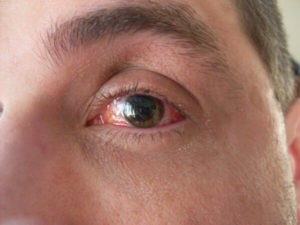

For example, a retinal tear or retinal detachment can be found in the peripheral retina. The peripheral retina comprises over 90 percent of the retina and is responsible for our peripheral and night vision.Īlthough macular diseases such as age-related macular degeneration (AMD) and diabetic macular edema are more common and generally more serious, there are a number of important and sometimes dangerous conditions that can occur in the peripheral retina. The macula is in the center of the retina and is responsible for our fine, central, and color vision. The retina can be divided into two main anatomic regions – the macula and the peripheral retina.

Central Serous Retinopathy / Chorioretinopathy.

Retinal Artery Occlusion (CRAO and BRAO).Peripheral Retinal Pathology - Lattice Degeneration, White Without Pressure, Pigmented Lesions and Masses.Panretinal Photocoagulation (PRP) Laser.Entrusting your care to a specialist in this field helps you to feel confident that you'll receive the right monitoring and, if necessary, treatment, so that you can keep your vision for life. If you have this condition, or if you suspect that you are at risk, please contact our office to schedule an appointment with one of our retina specialists. We see patients with lattice degeneration, in our El Centro, La Mesa, and Chula Vista eye doctor offices. Lattice Degeneration Treatment Chula Vista, La Mesa, El Centro Thus, while lattice degeneration itself doesn't generally cause significant visual symptoms, it is still very important to be monitored regularly by a doctor, in order to ensure that there are no dangerous symptoms. Permanent vision loss can result, if this condition is not treated promptly. Because the primary blood supply to the retina passes through this layer, separating the retina from this layer can cause it to be deprived of oxygen and nutrients, leading to retinal damage. This can cause the retina to lift up off of the supporting structure beneath it. People with lattice degeneration experience a thinning and potentially atrophy of the peripheral (outer) parts of the retina. When the retina begins to thin and degrade, it's easy for fluid to pass into the space beneath.

How Does Lattice Degeneration Cause Retinal Detachment? However, the damage to the peripheral retina can lead to more serious problems, including retinal detachment, which can in some cases be vision-threatening. In most cases, lattice degeneration in itself will not cause significant symptoms. This will only affect the peripheral vision, which isn't really noticeable to most people, since the peripheral vision is already not very sharp anyway. In people with this condition, the peripheral retina becomes thinner and undergoes a process of atrophy. Lattice degeneration is a hereditary condition that tends to be more common in those who are myopic, or nearsighted, although it can affect anyone. What is lattice degeneration? How can it harm vision? Is it treatable? What Is Lattice Degeneration? In some cases, it can lead to severe vision loss. Lattice degeneration is a common diagnosis.


 0 kommentar(er)
0 kommentar(er)
